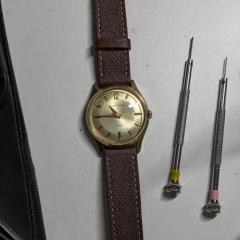Omega Cal 552 Help
-
Similar Content
-
Recently Browsing
- No registered users viewing this page.
-
Topics
-
Posts
-
there are various approaches to learning watch repair. A lot of people want to jump right in and every single watches something to be repaired restored. But other times like this it's disposable it's here for you to learn and when you're through learning you throw it away. yes you definitely should try this you have a learning movement you need to learn and the best way to learn is by doing something.
-
By nevenbekriev · Posted
Sorry, the friction will be so great that the wheel will barely turn, if the movement will start at all, the amplitude will be verry lo. -
If I can’t re-pivot the wheel, the logical thing to do is to descend the pivot hole. Plan is to either stick a suitably sized hole jewel (from a barrel bridge or something) or fashion a blob of epoxy on the underside of the escape wheel cock so the wheel sits on its one pivot on the base plate and the staff with the broken off pivot (which I’ll polish as best as I can) becomes the upper pivot. As long as it doesn’t foul the 4th wheel it should work? I know it’s a bodge job, and if this were a rare movement, or belonged to someone else I would not do this. I’m just interested to see if I can get the thing to run.
-
I'm curious if the base diameter could be changed so that it could be used with the hand press tool, which I believe is 31.0 mm.
-
By ManSkirtBrew · Posted
Nice result, and a really handsome watch! You'll enjoy putting that on every single time.
-







Recommended Posts